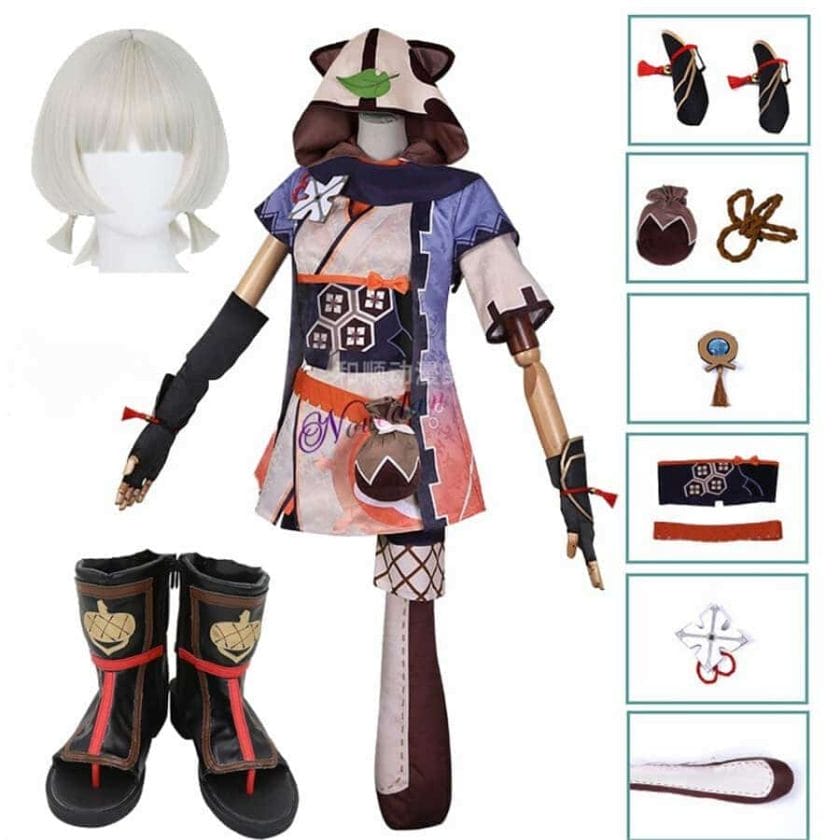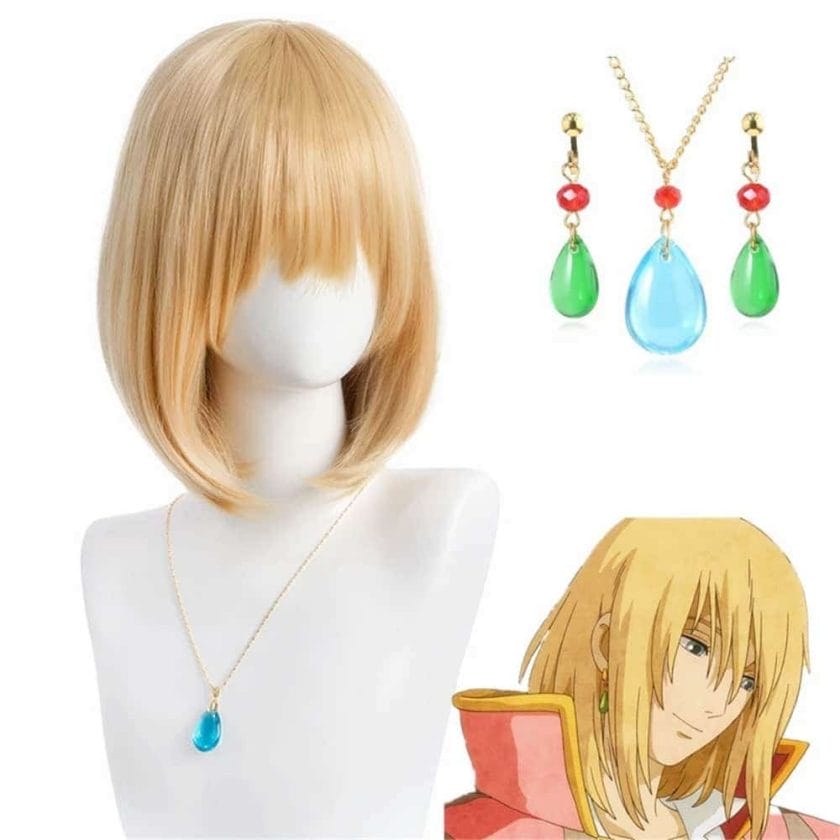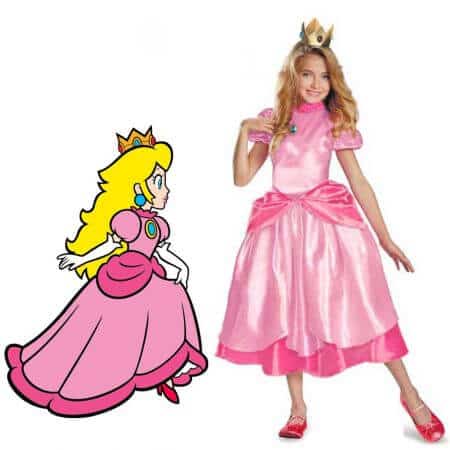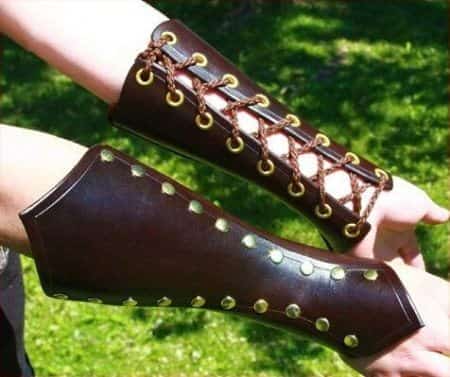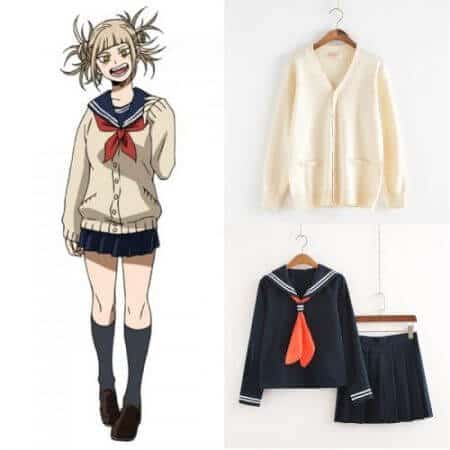Hey Leute! Habt ihr schon mal was von der Fashionindustrie in Japan gehört? Sie ist einfach der Wahnsinn! In diesem Text werde ich euch einen kurzen Einblick geben, was die japanische Mode so einzigartig und faszinierend macht. Also schnallt euch an und lasst uns eintauchen in die Welt des japanischen Stils!
Wann begann die Modeindustrie in Japan internationale Anerkennung zu erlangen?
Die Modeindustrie in Japan begann in den 1970er Jahren internationale Anerkennung zu erlangen. Zuvor war die japanische Mode hauptsächlich von traditionellen Kleidungsstilen und westlichen Einflüssen geprägt. Doch dann kam ein neuer Wind auf, als japanische Designer wie Issey Miyake und Yohji Yamamoto ihre einzigartigen Designs auf internationalen Laufstegen präsentierten.
Miyake wurde bekannt für seine avantgardistischen Designs, die oft mit unkonventionellen Materialien experimentierten. Er führte auch das Konzept der “Pleats Please” ein, bei dem Stoffe so gefaltet wurden, dass sie dauerhaft knitterfrei blieben. Yamamoto hingegen war bekannt für seine dunklen, minimalistischen Designs, die eine neue Ästhetik in die Modewelt brachten.
Arknights Mostima RHODES ISLAND Cosplay
€59,99 – €196,99Diese beiden Designer waren Pioniere einer neuen Welle von japanischer Mode, die international Beachtung fand. Sie inspirierten viele andere Designer und trugen dazu bei, dass Japan als wichtige Modemetropole anerkannt wurde.
Einfluss der Popkultur
Eine weitere entscheidende Entwicklung war der Einfluss der japanischen Popkultur auf die Modeindustrie. In den 1980er Jahren gewannen Anime- und Manga-Serien wie “Sailor Moon” und “Dragon Ball” weltweit an Popularität und beeinflussten auch die Modetrends. Junge Menschen wollten die Outfits ihrer Lieblingscharaktere nachahmen und so entstand eine neue Form von Street Fashion.
Harajuku, ein Stadtteil in Tokio, wurde zum Epizentrum dieser neuen Modewelle. Hier trafen sich junge Leute, um ihre ausgefallenen und individuellen Looks zu präsentieren. Dieser Stil wurde als “Harajuku-Mode” bekannt und zog die Aufmerksamkeit der internationalen Modebranche auf sich.
Genshin Impact Sayu Cosplay
€49,99 – €220,99Der Einfluss des Westens
Obwohl die japanische Modeindustrie internationale Anerkennung erlangte, war sie immer noch stark vom Westen beeinflusst. Viele japanische Designer studierten im Ausland oder arbeiteten für westliche Modehäuser, bevor sie ihre eigenen Marken gründeten. Dies führte zu einer interessanten Mischung aus östlichen und westlichen Einflüssen in der japanischen Mode.
Auch heute noch ist die japanische Modeindustrie stark von internationalen Trends geprägt. Japanische Designer nehmen diese Trends jedoch oft auf und interpretieren sie auf ihre eigene einzigartige Weise. Dadurch bleibt die japanische Mode weiterhin relevant und inspirierend für Modedesigner auf der ganzen Welt.
Welche traditionellen Kleidungsstile gab es in Japan vor dem Einfluss des Westens?
Kimonos
Der Kimono ist wohl einer der bekanntesten traditionellen Kleidungsstile Japans. Er wird seit Jahrhunderten von Männern und Frauen getragen und besteht aus einem langen, weiten Gewand mit breiten Ärmeln. Kimonos werden oft aus hochwertigen Seidenstoffen gefertigt und sind kunstvoll mit Mustern und Stickereien verziert.
Arknights Mostima RHODES ISLAND Cosplay
€59,99 – €196,99Yukatas
Die Yukata ist eine leichtere Version des Kimonos und wird hauptsächlich im Sommer oder bei festlichen Anlässen getragen. Sie besteht aus Baumwolle oder Leinen und ist weniger formell als ein Kimono. Yukatas sind oft mit farbenfrohen Mustern bedruckt und werden mit einem Obi, einem breiten Gürtel, zusammengebunden.
Hakamas
Hakamas sind weite Hosenröcke, die über einem Kimono getragen werden. Ursprünglich wurden sie von Samurai als Teil ihrer Rüstung verwendet, aber im Laufe der Zeit wurden Hakamas auch zu einem modischen Kleidungsstück für Männer und Frauen.
Liste traditioneller Accessoires:
- Geta: traditionelle Holzsandalen
- Obi: breiter Gürtel zum Binden eines Kimonos oder Yukatas
- Zri: flache Sandalen aus Stroh oder Leder
- Hachimaki: Stirnband, das oft bei sportlichen Aktivitäten getragen wird
- Uchiwa: handgefächertes Accessoire für heiße Sommertage
Die traditionellen Kleidungsstile Japans vor dem Einfluss des Westens waren geprägt von Eleganz, Handwerkskunst und einer starken Verbindung zur Natur. Diese Stile haben bis heute einen wichtigen Platz in der japanischen Kultur und werden bei besonderen Anlässen oder Festivals immer noch gerne getragen.
Arknights Mostima RHODES ISLAND Cosplay
€59,99 – €196,99Wie hat sich die Modeindustrie in Japan nach dem Zweiten Weltkrieg entwickelt?
Die Nachkriegszeit und der Einfluss des Westens
Nach dem Zweiten Weltkrieg begann Japan, sich wirtschaftlich zu erholen und seine eigene Identität in der Modeindustrie zu entwickeln. In den 1950er Jahren wurde die westliche Mode zum Vorbild für viele japanische Designer. Der Einfluss von Hollywood-Filmen und amerikanischen Stilikonen wie Marilyn Monroe war deutlich spürbar. Japanische Designer begannen, westliche Schnitte und Stoffe in ihre Kollektionen einzubringen.
Innovation und Avantgarde-Design in den 1980er Jahren
In den 1980er Jahren erlebte die japanische Modeindustrie einen Boom. Junge Designer wie Yohji Yamamoto und Rei Kawakubo von Comme des Garçons brachten eine neue Ästhetik in die Modewelt ein. Ihre avantgardistischen Designs, geprägt von asymmetrischen Schnitten und dekonstruierten Silhouetten, beeinflussten nicht nur die japanische Mode, sondern auch die internationale Modewelt.
Die Bedeutung der Street Fashion
Eine weitere wichtige Entwicklung in der japanischen Modeindustrie war der Aufstieg der Street Fashion. Insbesondere der Harajuku-Stil prägte das Bild von modisch gekleideten Jugendlichen auf den Straßen Tokios. Diese Subkultur hatte einen großen Einfluss auf die gesamte Modeindustrie in Japan, da sie neue Trends und Stile hervorbrachte, die von den etablierten Modemagazinen oft übernommen wurden.
Die Globalisierung und der Einfluss internationaler Marken
Mit der Globalisierung hat sich auch die japanische Modeindustrie weiterentwickelt. Internationale Marken wie Louis Vuitton und Gucci haben in Japan einen großen Marktanteil erobert und beeinflussen den Geschmack der Konsumenten. Gleichzeitig haben japanische Designer wie Issey Miyake und Kenzo erfolgreich ihre eigenen Marken im Ausland etabliert, wodurch die japanische Mode weltweit Anerkennung gefunden hat.
Welche ikonischen japanischen Modemarken entstanden in den 1980er und 1990er Jahren?
Comme des Garçons
Eine der bekanntesten japanischen Modemarken, die in den 1980er Jahren entstand, ist Comme des Garçons. Die Marke wurde von der Designerin Rei Kawakubo gegründet und hat sich durch ihre avantgardistische Ästhetik und ihre unkonventionellen Designs einen Namen gemacht. Comme des Garçons hat die Grenzen der traditionellen Mode gesprengt und neue Wege für kreative Ausdrucksformen eröffnet.
Yohji Yamamoto
Ein weiterer prominenter Name aus den 1980er Jahren ist Yohji Yamamoto. Seine Designs zeichnen sich durch eine Mischung aus westlicher und japanischer Ästhetik aus und sind für ihre dunklen Farben und übergroßen Silhouetten bekannt. Yamamoto hat die Modewelt mit seinen avantgardistischen Kreationen revolutioniert und gilt als einer der einflussreichsten Designer seiner Zeit.
Wie hat Street Fashion, wie zum Beispiel der Harajuku-Stil, die gesamte Modeindustrie in Japan beeinflusst?
Der Harajuku-Stil, eine Form von Street Fashion, hat einen enormen Einfluss auf die gesamte Modeindustrie in Japan gehabt. Dieser einzigartige Stil entwickelte sich in den Straßen von Harajuku, einem Stadtviertel in Tokio, das für seine trendigen Boutiquen und exzentrischen Modebewussten bekannt ist.
Harajuku Street Fashion hat die Modewelt mit seinem kreativen und individuellen Ansatz auf den Kopf gestellt. Junge Menschen nutzen diesen Stil als Ausdruck ihrer Persönlichkeit und experimentieren mit verschiedenen Looks, Farben und Accessoires. Durch soziale Medien und Modeblogs hat sich der Harajuku-Stil weltweit verbreitet und beeinflusst nun auch internationale Designer und Trends.
Welche Rolle spielen Modemagazine bei der Gestaltung von Trends und Verbraucherpräferenzen in Japan?
Modemagazine spielen eine entscheidende Rolle bei der Gestaltung von Trends und Verbraucherpräferenzen in Japan. Sie dienen als wichtige Informationsquelle für Modebegeisterte, die nach Inspiration suchen oder über die neuesten Trends informiert werden möchten.
Diese Magazine präsentieren nicht nur die aktuellen Kollektionen japanischer Designer, sondern auch internationale Marken. Sie geben Einblicke in verschiedene Stile, zeigen angesagte Outfits und bieten Tipps zur Styling-Techniken. Viele Leser orientieren sich an den vorgestellten Looks und versuchen, diese in ihren eigenen Alltag zu integrieren.
Zusätzlich zu den gedruckten Magazinen haben auch Online-Modeplattformen an Bedeutung gewonnen. Sie ermöglichen es Benutzern, sich über die neuesten Modetrends zu informieren, Outfit-Ideen zu sammeln und ihre eigenen Kreationen zu teilen. Diese Plattformen haben dazu beigetragen, dass Mode noch zugänglicher wurde und den Austausch zwischen Modebegeisterten gefördert hat.
Können Sie das Konzept von “kawaii” erklären und seine Bedeutung für die japanische Mode erläutern?
“Kawaii” ist ein Begriff, der in Japan verwendet wird, um etwas Niedliches oder Liebenswertes zu beschreiben. In der japanischen Mode spielt das Konzept von “kawaii” eine bedeutende Rolle. Viele Modemarken setzen auf süße und verspielte Designs, die den “kawaii”-Stil verkörpern.
Der “kawaii”-Trend hat sich auch auf internationale Mode ausgeweitet und beeinflusst heute viele Designer weltweit. Von Hello Kitty bis hin zu bunten Pastellfarben und niedlichen Tiermotiven – der “kawaii”-Stil hat einen festen Platz in der japanischen Modeindustrie und wird von vielen Menschen als Ausdruck ihrer Persönlichkeit und Individualität angesehen.
Wie hat Technologie den Design- und Produktionsprozess innerhalb der japanischen Modeindustrie beeinflusst?
Die Technologie hat einen großen Einfluss auf den Design- und Produktionsprozess innerhalb der japanischen Modeindustrie gehabt. Durch den Einsatz moderner Computerprogramme können Designer ihre Ideen schnell visualisieren und digitale Entwürfe erstellen.
Darüber hinaus haben innovative Materialien und Herstellungstechniken die Möglichkeiten für kreative Designs erweitert. Durch den Einsatz von 3D-Druckern können Prototypen schneller hergestellt werden, was zu einer beschleunigten Produktentwicklung führt.
Auch im Vertrieb hat die Technologie einen großen Einfluss. Online-Shopping ist in Japan sehr beliebt geworden und ermöglicht es Kunden, Mode aus der ganzen Welt zu entdecken und zu kaufen. Social-Media-Plattformen bieten Designern die Möglichkeit, ihre Kollektionen einem breiten Publikum zu präsentieren und direkt mit ihren Kunden in Kontakt zu treten.
Was sind einige Herausforderungen, mit denen aufstrebende Designer konfrontiert sind, wenn sie sich auf dem japanischen Modemarkt etablieren wollen?
Der japanische Modemarkt kann für aufstrebende Designer eine Vielzahl von Herausforderungen mit sich bringen. Eine der größten Herausforderungen besteht darin, sich von etablierten Marken abzuheben und eine eigene Identität zu schaffen.
Zudem sind die Kosten für die Produktion und den Vertrieb von Mode in Japan oft hoch. Es kann schwierig sein, genügend finanzielle Ressourcen aufzubringen, um eine eigene Marke zu gründen und gleichzeitig wettbewerbsfähige Preise anzubieten.
Arknights Mostima RHODES ISLAND Cosplay
€59,99 – €196,99Außerdem ist der Wettbewerb in der japanischen Modeindustrie intensiv. Es gibt viele talentierte Designer, die um begrenzte Aufmerksamkeit kämpfen. Um erfolgreich zu sein, müssen aufstrebende Designer innovative Designs entwickeln und effektive Marketingstrategien nutzen, um ihre Zielgruppe zu erreichen.
Wie ist Nachhaltigkeit zu einer wachsenden Sorge innerhalb der japanischen Modeindustrie geworden?
Nachhaltigkeit ist in den letzten Jahren zu einer wachsenden Sorge innerhalb der japanischen Modeindustrie geworden. Immer mehr Menschen sind sich der Auswirkungen der Modeindustrie auf die Umwelt bewusst und suchen nach umweltfreundlicheren Alternativen.
Viele Modemarken in Japan haben begonnen, nachhaltige Materialien zu verwenden und ihre Produktionsprozesse zu überdenken. Sie setzen vermehrt auf Recycling und Upcycling, um Ressourcen zu schonen und Abfall zu reduzieren.
Auch Verbraucher spielen eine wichtige Rolle bei der Förderung von Nachhaltigkeit in der Modeindustrie. Durch bewusste Kaufentscheidungen können sie den Bedarf an umweltschädlichen Produkten verringern und Marken dazu ermutigen, nachhaltigere Praktiken einzuführen.
Können Sie kulturelle oder historische Einflüsse auf zeitgenössische Modetrends in Japan diskutieren?
Die zeitgenössischen Modetrends in Japan werden stark von kulturellen und historischen Einflüssen geprägt. Die traditionelle japanische Kleidung, wie zum Beispiel Kimonos, hat einen großen Einfluss auf moderne Designs gehabt.
Auch die Popkultur spielt eine wichtige Rolle bei der Gestaltung von Modetrends. Manga- und Anime-Figuren haben viele junge Menschen inspiriert, ihren eigenen einzigartigen Stil zu entwickeln. Cosplay, das Anziehen von Kostümen basierend auf Charakteren aus Manga, Anime oder Videospielen, ist ebenfalls ein beliebter Trend in Japan.
Weitere historische Einflüsse sind zum Beispiel die Ära der Samurai oder die Mode der Geishas. Diese traditionellen Elemente werden oft in modernen Designs interpretiert und verleihen ihnen eine einzigartige Ästhetik.
Wie beeinflussen Geschlechterfluidität und nicht-binäre Identitäten die heutigen Modewahlen in Japan?
Geschlechterfluidität und nicht-binäre Identitäten haben einen Einfluss auf die heutigen Modewahlen in Japan. Immer mehr Menschen brechen mit traditionellen Geschlechterrollen und suchen nach Kleidung, die ihre individuelle Identität widerspiegelt.
Viele Modemarken in Japan haben begonnen, geschlechtsneutrale Kollektionen anzubieten, die von Menschen aller Geschlechter getragen werden können. Dieser Trend hat zu einer größeren Vielfalt an Stilen und Schnitten geführt, die den unterschiedlichen Bedürfnissen und Vorlieben gerecht werden.
Darüber hinaus haben sich auch Modelabels entwickelt, die speziell für LGBTQ+-Gemeinschaften entworfen wurden. Diese Marken setzen auf inklusive Designs und möchten Menschen ermutigen, ihren eigenen individuellen Stil zu finden und auszudrücken.
Welchen Einfluss hat die Globalisierung auf die Zugänglichkeit und Beliebtheit der japanischen Mode weltweit gehabt?
Die Globalisierung hat einen großen Einfluss auf die Zugänglichkeit und Beliebtheit der japanischen Mode weltweit gehabt. Durch das Internet ist es viel einfacher geworden, internationale Modemarken zu entdecken und Produkte aus aller Welt zu kaufen.
Die japanische Modeindustrie hat von dieser globalen Vernetzung profitiert und ist zu einem wichtigen Akteur auf dem internationalen Modemarkt geworden. Japanische Designer werden weltweit für ihre innovativen Designs und ihre einzigartige Ästhetik gelobt.
Arknights Mostima RHODES ISLAND Cosplay
€59,99 – €196,99Auch der Einfluss der japanischen Popkultur, wie Manga und Anime, hat dazu beigetragen, dass die japanische Mode weltweit populär geworden ist. Viele Menschen sind von den exzentrischen Stilen und auffälligen Outfits inspiriert und möchten diese in ihrem eigenen Alltag tragen.
Gibt es bestimmte Subkulturen innerhalb der japanischen Modeindustrie, die in letzter Zeit viel Aufmerksamkeit erhalten haben?
In letzter Zeit haben bestimmte Subkulturen innerhalb der japanischen Modeindustrie viel Aufmerksamkeit erhalten. Eine davon ist die “Lolita”-Subkultur, die von viktorianischer Kleidung inspiriert ist. Lolita-Mode zeichnet sich durch verspielte Kleider, Rüschen und Spitze aus.
Eine weitere bekannte Subkultur ist “Gyaru”, bei der junge Frauen einen sehr femininen und extravaganten Stil pflegen. Dieser Trend umfasst oft blonde Haare, auffälliges Make-up und bunte Outfits.
Arknights Mostima RHODES ISLAND Cosplay
€59,99 – €196,99Auch die “Visual Kei”-Subkultur hat in den letzten Jahren an Popularität gewonnen. Diese Bewegung betont theatralische Elemente mit auffälliger Kleidung, dramatischem Make-up und ausgefallenen Frisuren.
Wie unterscheidet sich der Konsum von Luxusmarken zwischen Japan und anderen Ländern?
Der Konsum von Luxusmarken in Japan unterscheidet sich in einigen Punkten von dem in anderen Ländern. In Japan schätzen viele Menschen hochwertige Produkte und legen Wert auf Qualität und Handwerkskunst.
Im Vergleich zu einigen westlichen Ländern ist der Luxuskonsum in Japan oft subtiler und weniger auf Markenlogos ausgerichtet. Viele Menschen bevorzugen diskrete Designs, die ihre Wertschätzung für feine Details zeigen.
Zudem spielt die Geschichte einer Marke eine wichtige Rolle bei der Kaufentscheidung. Traditionelle japanische Luxusmarken wie Hermès oder Louis Vuitton sind besonders beliebt, da sie einen Ruf für erstklassige Qualität haben.
Die Modeindustrie in Japan ist eine faszinierende Welt voller Kreativität und einzigartigem Stil. Von traditioneller Kimono-Kleidung bis hin zu avantgardistischen Streetwear-Looks gibt es in Japan für jeden Geschmack etwas zu entdecken. Wenn du dich für japanische Mode interessierst, solltest du unbedingt unsere Cosplay-Produkte überprüfen! Wir bieten eine breite Auswahl an hochwertigen Kostümen und Accessoires, die von Anime, Manga und Videospielen inspiriert sind. Kontaktiere uns gerne, wenn du Fragen hast oder weitere Informationen benötigst. Wir freuen uns darauf, von dir zu hören und helfen dir gerne dabei, deinen eigenen einzigartigen Stil zu finden!
https://img.rawpixel.com/s3fs-private/rawpixel_images/website_content/fl14302821381-image.jpg?w=800&dpr=1&fit=default&crop=default&q=65&vib=3&con=3&usm=15&bg=F4F4F3&ixlib=js-2.2.1&s=135088721cb865fffc5a713ee155dd88
Wofür ist Japan in der Mode bekannt?
Der Kimono ist ein bekanntes und weltweit anerkanntes traditionelles Kleidungsstück, das aus Japan stammt. Der Begriff “Kimono” kann grob als “etwas zum Tragen” übersetzt werden und umfasst den grundlegenden Zweck jedes Kleidungsstücks. Der Kimono verkörpert auch das Konzept der Einfachheit im Design von Kleidung.
Ist Japan modebewusst?
Der japanische Bekleidungsmarkt ist einer der größten weltweit. Während traditionelle Kleidung in der japanischen Kultur weiterhin wichtig bleibt, hat die Industrie begonnen, westliche Modetrends zu integrieren und auch eigene Trends zu schaffen. Diese Informationen wurden am 4. Januar 2023 gemeldet.
https://p1.pxfuel.com/preview/334/159/813/japan-people-person-women.jpg
Ist Japan die Modemetropole der Welt?
Tokio gilt als das Modezentrum Asiens und hat viele weltweit bekannte Unternehmen hervorgebracht.
Welches Land ist am höchsten in Mode?
Laut dem Brands Countries IPX von IFDAQ gilt Frankreich als das führende Land der Welt für die Modeindustrie.
Genshin Impact Sayu Cosplay
€49,99 – €220,99Warum sind alle in Japan so stilvoll?
Die japanische Mode dient als Mittel der kreativen Ausdrucksweise für Einzelpersonen in der japanischen Kultur und ermöglicht es ihnen, ihre Inspirationen, Werte und gesellschaftlichen Konventionen zu präsentieren. Dies hat die japanische Mode zu großen Höhen getrieben und die Welt mit ihrer einzigartigen Fusion aus zeitgenössischem und orientalischem Stil fasziniert.
Wie ist die japanische Modenkultur?
In Japan tragen die Menschen in der Regel zwei Arten von Kleidung: traditionelle japanische Kleidung wie Kimonos und westliche Kleidung. Die traditionelle japanische Kleidung, genannt Wafuku, umfasst die Nationaltracht Japans, während die westliche Kleidung, bekannt als Youfuku, alle anderen Arten von Kleidung beinhaltet, die nicht als Nationaltracht oder Tracht aus einem anderen Land betrachtet werden.



